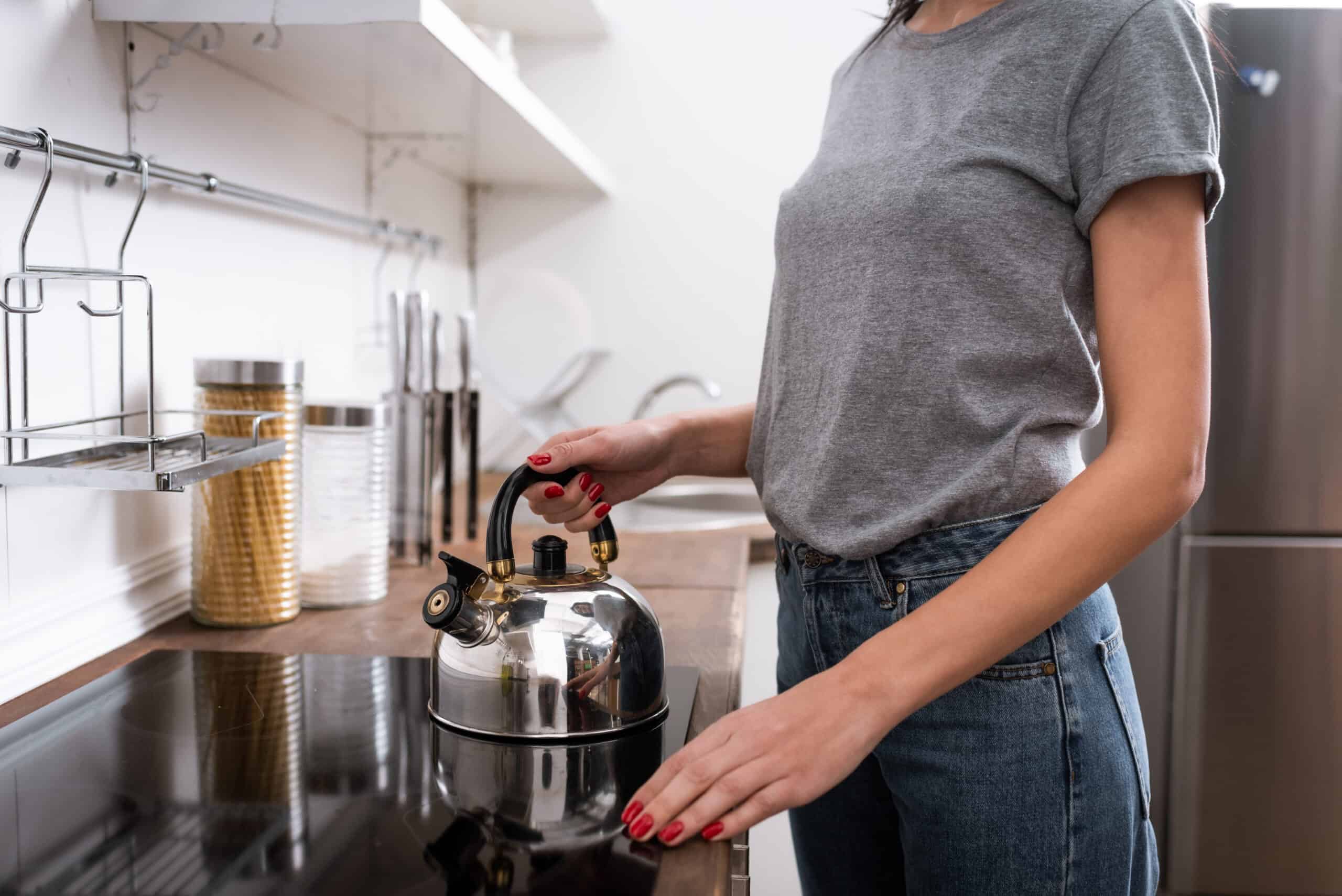Whether or not a frying pan has a lid will depend on the type of frying pan. There are 2 main kinds of frying pans: skillets and sauté pans.
Skillet frying pans typically don’t come with lids and are great for cooking foods quickly and at high temperatures. Sauté pans, on the other hand, usually have lids and are most suitable for poaching, braising, slow cooking, and reducing sauces.
Whether or not you use a lid with a frying pan depends on your preferred cooking method and the type of foods or recipes you’re making.
This article will explain everything you need to know about using a lid with a frying pan.

Can I Use a Frying Pan Without a Lid?
You can use a frying pan without a lid, known as a skillet, as they’ve been designed to cook food without a lid. Skillet frying pans are also relatively shallow to help rapidly heat food and have curved edges to make flipping food easier.
In the next sections, you’ll learn which cooking methods are best used with skillets.
Skillets Are Best Used for Shallow Frying
Shallow frying is an excellent cooking method for a small quantity of food that needs to be stirred or turned regularly.
Foods like eggs, pancakes, and frittatas are great for shallow-frying in a skillet without a lid as they allow the cook to flip and stir the food quickly and easily using a spatula, spoon, or egg flipper.
When you cook these foods quickly, and at a high temperature, the results are optimal, making a skillet pan the best choice.
Use a Skillet for High-Heat Searing and Grilling
If you have a small quantity of meat, vegetables, or fish to fry, a skillet without a lid will allow you to cook it quickly and at very high heat.
- After a few minutes, one side of the food will be seared, and the skillet will allow you to turn it over quickly or toss it.
High-heat searing or grilling is often the first step to making a dish as it forms a rich, tasty, brown crust on the surface that brings out the food’s natural, savory flavor. You can then transfer the food into another cooking vessel for a slower cooking method.
What Do You Call a Frying Pan With a Lid?
A frying pan with a lid is called a sauté pan. A sauté pan has a larger and thicker surface area than a skillet and has deeper sides, allowing it to hold larger quantities of food and liquids and prevent spills.
Sauté pans are great for cooking food for a large group of people. Unlike skillet pans, they don’t provide easy food manipulation with a skillet or spoon.
Some chefs consider sauté pans to be multi-purpose frying pans as they’re excellent for frying with the lid on or shallow frying large quantities of food without a lid.
- Using a lid with a sauté pan allows the food to cook gently at lower temperatures, but since the sides are taller, they don’t allow easy food manipulation.
You can use sauté pan to suit different cooking methods, as discussed below:
Use a Sauté Pan for Slow Cooking
With their deeper sides and lids, sauté pans effectively retain the food’s moisture, making them excellent for slow cooking.
A sauté pan typically has a thicker bottom that helps prevent the food from burning and retains low-temperature heat over a long period to facilitate slow cooking.
Make Food Sauce Using a Sauté Pan
When you need to reduce a sauce in a hurry, a sauté pan is the best cooking vessel to use.
With its wide surface area, the sauce’s contents will condense much quicker. This is best done without a lid, as you need to stir the sauce regularly to ensure that you achieve a consistent thickness.
Use a Sauté Pan for Braising, Poaching, and Steaming
Braising involves first searing the food in a skillet and then transferring it into a sauté pan with stock or wine to tenderize it.
- When you use a sauté pan with the lid on, the food will absorb the flavors of the liquid and become more tender.
A sauté pan is ideal for braising as the food doesn’t overcrowd the pan and the tall sides hold the liquid perfectly.
Poaching and steaming methods use water for cooking the food gently just below boiling point. With the lid on the sauté pan, the steam also helps cook the food and produce delicate flavors.
Choose a Sauté Pan When Cooking for Large Groups
Sauté pans typically have larger surface areas than skillets. This makes them a better choice when cooking for a large group of people.
Whether you cook stewed meat, stir fry, or paella, a sauté pan has plenty of room to accommodate everything.
Best Non-Stick Frying Pan With a Lid
The best non-stick frying pans with lids (also known as sauté pans) have been made with the best quality materials.
The bottom of the pan should be heavy and thick, and it should not contain PFOA (Perfluorooctanoic acid) as this is known to be harmful to human development, growth, and liver health.
Something like the Circulon 14″ Helper Handle Hard Anodized Aluminum Skillet (available on Amazon) would work wonders in your kitchen. Hard-anodized aluminum is an excellent choice as it’s more durable than stainless steel and can easily last a lifetime.
Conclusion
Using a frying pan with or without a lid depends on how you want to cook your food. Some cooking methods work best with the lid on, while others are better without a lid.
Flash frying, searing and shallow frying small food quantities don’t require a lid. In these cases, use a skillet as its gently curved and short sides allow you to easily flip and toss the food.
If you want to poach, braise, steam, or slow cook a dish, a sauté pan is perfect as the lid retains the moisture, allowing the food to absorb the surrounding flavor.





